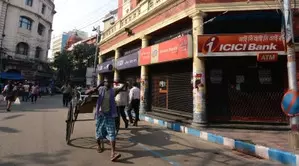Securitisation volume in India estimated at Rs 68,000 cr in Q3 FY25: ICRA

Mumbai, Jan 4 The securitisation volumes in India are estimated at Rs 68,000 crore for the October-December period this fiscal (Q3 FY25), according to latest data by credit rating agency ICRA.
This was driven by private banks boosting credit-to-deposit ratios, while non-banking financial companies (NBFCs) face muted growth amid industry headwinds, according to Abhishek Dafria, SVP and Group Head-Structured Finance Ratings, ICRA Limited.
“The securitisation volumes for Q3 FY2025 are estimated by ICRA to be Rs 68,000 crore, which is similar to the volumes witnessed in the previous quarter,” said Dafria in a post on social media platform X.
The market volumes are being driven upwards this fiscal by a few private sector banks who have been using securitisation as means to improve their credit to deposit ratio given the relatively lower pace of deposit growth.
“The NBCs, on the other hand, have seen relatively muted growth in disbursements, especially in the unsecured asset classes such as microfinance and personal loans, due to industry headwinds resulting in tepid securitisation volume growth for the quarter,” Dafria posted.
According to estimates, Rs 25,000 crore is on account of private banks acting as originators and the remaining Rs 43,000 crore has been securitised by NBFCs. Securitisation by HDFC Bank, the largest private lender in the country, is around Rs 12,000 crore in Q3.
In the second quarter this fiscal (Q2 FY25), securitisation volume in India rose 56 per cent (year-on-year) to about Rs 70,000 crore. This was propelled by large issuances by some key players, especially a large private sector bank, and a few NBFCs that are primarily into vehicle financing, according to a recent report by CRISIL Ratings.
The performance helped securitisation volume surpass Rs 1.15 lakh crore for the first half of the fiscal, clocking a 15 per cent on-year growth.
Aparna Kirubakaran, Director, CRISIL Ratings, had said that strong market volume observed in the first half was fuelled by large originations by a big private sector bank and a few vehicle financiers.
Source: IANS